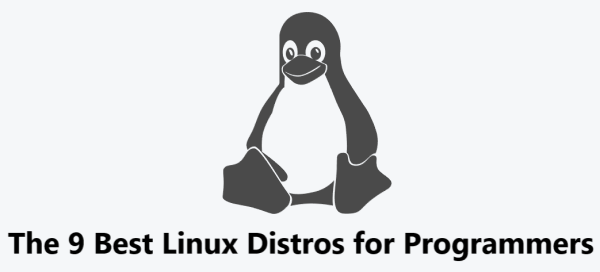This guide covers the nine best Linux distros for programmers. In fact, Linux distros have a wide range of features that make them ideal for programmers and developers. From Bash scripting and text editors to virtualization and cloud computing, there is something for everyone. With the right tools and knowledge, Linux can help you become a more productive and efficient programmer. So hopefully this tutorial has helped you find the best Linux distro for your needs.
For programmers, there are a number of features and toolsets available within Linux distros that can make their work easier and more efficient.
Main features of Linux Distros for Programmers includes:
1. Bash Scripting
Bash scripts are a powerful way to automate tasks and can be used to write complex programs. Bash is the default shell for most Linux distributions and is well documented, making it a great choice for beginners and experienced programmers alike.
2. Package Managers
Most Linux distros come with an easy-to-use package manager that allows users to quickly install and update software. These package managers make it easy to install and maintain software on your system.
3. Text Editors
Linux distros come with a variety of text editors, from the simple command line editors such as Vim and Emacs to fully featured graphical editors like Gedit and Kate.
4. Command Line Interface
The command line interface (CLI) is a powerful tool that allows users to quickly and easily perform tasks without using the mouse or graphical user interface (GUI).
5. Compilers
Most Linux distros come with a compiler such as GCC, making it easy to compile and build programs written in C and C++.
6. Debuggers
Debuggers such as GDB allow programmers to track down and fix difficult bugs in their code.
7. Version Control
Version control systems like Git allow programmers to manage their code and collaborate with others.
8. IDEs
Integrated development environments (IDEs) such as Eclipse and NetBeans provide a complete development environment with debugging, version control, and other tools.
9. Automation
Linux distros come with tools such as cron and (shell or perl) scripts that allow users to automate tasks.
10. Networking
Linux distros come with tools for setting up and managing networks, such as firewalls, DNS, and DHCP.
11. File Systems
Linux can use a variety of file systems, allowing users to access and manage their data more efficiently.
12. Security
Linux comes with a variety of security features, such as the AppArmor and SELinux security frameworks, that help make it a secure operating system.
13. Virtualization
Virtualization technologies such as KVM and Xen allow users to run multiple operating systems on the same machine.
14. Containers
Containers such as Docker and LXC provide an easy way to package and share applications and data across multiple machines.
15. Performance Monitoring
Linux distros come with a variety of performance monitoring tools, such as top and vmstat, that allow users to keep track of system performance.
16. System Monitoring
System monitoring tools such as Munin and Nagios allow users to monitor server performance and network traffic.
17. Web Servers
Linux distros come with a variety of web servers, such as Apache and Nginx, that allow users to easily host websites.
18. Database Servers
Linux distros come with a variety of database servers, such as MySQL and PostgreSQL, that allow users to store and manage data.
19. Cloud Computing
Linux distros come with tools for deploying applications to the cloud, such as OpenStack and Cloud Foundry.
20. Programming Languages
Linux distros come with support for a variety of programming languages, including C, C++, Java, Python, and Ruby.

